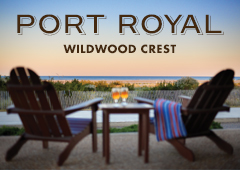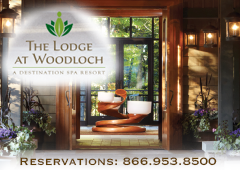LET FREEDOM RING
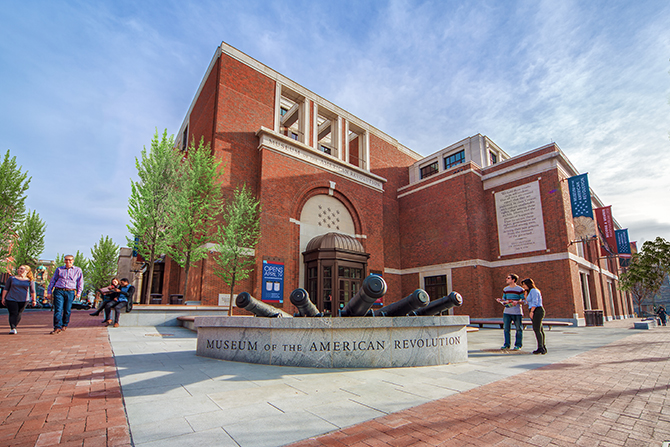 Photo by Jeff Fusco
Photo by Jeff FuscoBy Michael Alpiner
The smoky scent of gunpowder and the triumphant chirp of the fife and drum are still present upon the cobblestone streets and within the stoic Georgian Colonial homes that epitomize a journey to Historic Philadelphia. A short two-hour drive (a week on horseback or carriage ride in 1776) will take you the 97 miles from New York City to Philadelphia.
The city has a variety of moods and appearances: One doorway in Philadelphia can offer a slice of American history, a portal to the past where British colonialism and subjugation met resistance from a nation starving for freedom. Another doorway might lead the traveler to satisfy a different kind of hunger by indulging in a famous cheesesteak, deliciously unhealthy lest you find the nutritional value within a splash of Cheez Whiz. My cheesesteak choice is Jim’s South Street (jimsouthstreet.com), a hipster hangout. On a Friday or Saturday night, South Street pulses like a decadent beacon where pedestrians are anything but pedestrian, populating the clubs and cafes, retail stores, music and comic book shops.
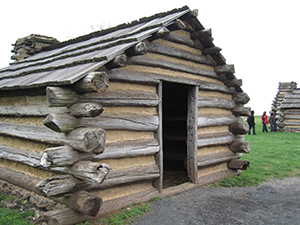 Valley Forge Hut
Valley Forge HutWALK THROUGH HISTORY
Philadelphia’s blend of the stoic and historical, the diversity and acceptance, and the openness and pride are in itself the story of America. This story is beautifully and artistically told in the new Museum of the American Revolution (amrevmuseum.org), which opened its doors earlier this year, and was celebrated by a moving speech from former Vice-President, Joe Biden before a crowd on the steps leading into the grand foyer of the museum.
Inside, visitors can walk through the chronological path of history via a multimedia and sensory experience that includes artifacts and wax facsimiles of those who contributed to the rich tale of the birth of our nation. Displays commemorate the Continental Congress, the Boston Tea Party, the weaponry as well as the poetry of the Revolution, a portrait of General Washington painted by Charles Willson Peale, some video presentations including one in which the viewer is immersed in the sounds, lights and smoke of battle. Included as well, under somber illumination, behind the glass of austere remembrance, hangs a pair of manacles resembling iron-rimmed glasses, the size fit for the innocent wrists of a child sold or born into slavery, a weighty reminder of our tainted past.
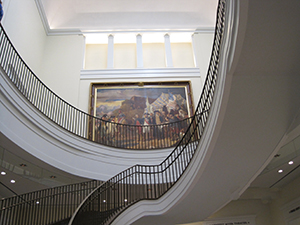 Grand Staircase at Museum of American Revolution
Grand Staircase at Museum of American RevolutionThe best was saved for last. A film presentation (oddly, not narrated by Morgan Freeman) told the history behind the tent where George Washington forged so many wise battle plans and spent so many restless nights. After the film, a curtain rose with much of the same drama that introduced King Kong to an eager New York audience. There in all of its linen majesty was George Washington’s actual tent, impressively preserved over the centuries. Ironically, it was protected from destruction during the Civil War by Robert E. Lee’s enslaved housekeeper, Selina Norris Grey.
HISTORY AROUND EVERY CORNER
The story is not complete without a tour of some historic homes, where authenticity itself is a storyteller. The Stenton House (stenton.org) is the homestead of James Logan; linen merchant turned fur trader turned statesman, who became William Penn’s secretary and later protégé to Benjamin Franklin (who often stayed at Stenton). The artifacts from his life as a Quaker, scholar, and prominent political figure are plentiful, from rare books to textiles to American and European furnishings. Another historic home worthy of a visit is The Cliveden House (cliveden.org), home to the Chew family, and one of the most authentically intact examples of Colonial wealth and prominence. The history of the house parallels the themes of America, both the quest for success and the struggle for freedom. It is bittersweet to stroll through the impressive halls and rooms (for Benjamin Chew was a lawyer, associate of William Penn and protégé of Alexander Hamilton) yet not know that much of the family’s financial advantage was earned on the backs of the enslaved and indentured.
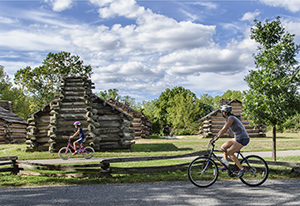 Valley Forge National Park
Valley Forge National ParkThe keystone of a trip to Historic Philadelphia is a tour of Valley Forge National Park (nps.gov/vafo). The site of a six-month encampment in 1777, Valley Forge has stood a symbol of American resilience as well as a testament to the spirit of diversity and inclusion that has always muscled itself through tough times. Within the log and mud huts, a dozen men, black and white, shared a claustrophobic living space where color lines were blurred behind the bane of universal suffering: the severe cold, the lack of supplies, sickness, and the dearth of food. Women also served vital roles, caring for the sick, carrying supplies, washing, foraging for food, at half the soldier’s already meager rations. Native Americans, mostly from the Oneida tribe, encamped here as well and rounded out the ten thousand patriots who eventually caused the British retreat.
A day of historical reflection would not be complete without a meal at City Tavern Restaurant (citytavern.com) where the staff is dressed in period garb, the furnishings modeled in the colonial style, and the food and drink reminiscent of the sustenance of our nation’s early years. Excellent brews can be imbibed at 2nd Story Brewing Company (2ndstorybrewing.com) which offers a wide variety of potent potables and a tasty, yet casual dining experience. For the wine connoisseur, I suggest stopping by Pinot Boutique (pinotboutique.com) for sample tastings, classes, accessories, snacks, and hopefully an armful of their local vintage. A stay at the Penn’s View Hotel (pennsviewhotel.com) promises modest accommodations but excellent dining at their Panorama Restaurant and vast wine cellar.
On my return trip to New York City, I held onto the spirit of Historic Philadelphia and experiencing the rich portrait of that history; I feel like I have a better sense of the quality of the rest of my journey as an American.
For more information on Historic Philadelphia, go to visitphilly.com.

Michael Alpiner has been an English teacher in New York City for the past 29 years. Michael has published work in Jewish Currents, Soul Fountain, Light, New Work Review, and Blood to Remember (an anthology of Holocaust-related poetry).












